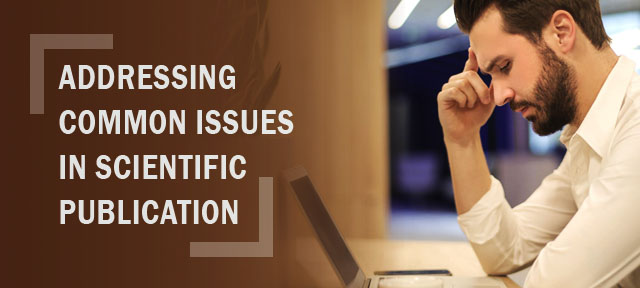Scientific Publication: Introduction

The scientific publication refers to documents, posters, manuscripts, abstracts, or a scientific or medical paper that include any data, findings of any clinical study, or any other information regarding or relating to the licensed product.
Requirements of Publication
Numerous scientists choose to publish their effort for a variety of reasons, including career advancement, financial opportunities, and professional status. Furthermore, publications are the most widely utilized criterion for determining a researcher’s performance around the world. (next.newsday.com) As a result, it is critical to review every aspect of the journal before submitting it.
It includes critical issues, such as framing hypotheses or suggested explanations; gathering, establishing, and estimating facts; creating assumptions and obtaining conclusions; and finally, wisely evaluating the conclusions to see if they fit the formulating assumption.
The below platforms must be monitored in selecting the accurate journal and publication of the manuscripts:
- Journal Scope and Target Audience
- Author Guidelines/Instructions
- Impact factor of the journal
- Check if the journal is legit or predatory
- Rapid but authentic publication process
- Acceptance rate
Common problems in publication
Authors must be aware of the challenges that their scientific discoveries face in terms of timely and widespread distribution. It is becoming increasingly challenging to provide access to scholarly scientific, technological, and medical (STM) knowledge. After all, the success or failure of information distribution, whether in print or electronic form, determines the spread of their results and their eventual impact on society.
Scholars attempting to publish their papers, as well as published scientists, face numerous hurdles, whether they are related to the publishing industry’s intrinsic struggles and obstructions or to scientific reasons. Here, we will go over three of the most typical obstacles you could encounter while trying to publish your paper:
1- Choosing the Suitable Journal
When presenting your paper, make sure you’re targeting the exact category and target audience, as this will save you time, effort, and money in the case of paid submissions. Furthermore, certain journals have a good reputation in specific subjects; therefore, it’s a good idea to do some research ahead of time to find the ideal magazine to submit your article to.
2- Language and Style
It’s crucial to remember that each publication has its unique format and style for presenting articles. This information is noted on the journal’s website in the “author rules” section. The directions must be carefully read by the authors, and the text must follow the format and style criteria. Pay close attention to the reference formatting and artwork guidelines, as manuscripts that do not follow the journal’s specific guidelines are frequently rejected or returned to the authors.
3- Plagiarism and Similarities
Authors must ensure that the manuscript is written in a clear and succinct manner, with no unnecessary information included. You can avoid this risk by ensuring that the source of information is properly acknowledged, exclusively if it is quoted directly and that this information is clear and apparent in the citations section. There are numerous software tools available that compare fresh manuscripts to already published manuscripts; a small investment for the purpose of your document’s credit is a great deal, and you receive your money’s worth.
Conclusion
We can establish services that best support science in the digital age by promoting an atmosphere for experimentation in publication and evaluation, as well as regularly analyzing and improving on beneficial methods. We at ManuscriptEdit feel this is the way publication will go in the future. We’re on our way there.

